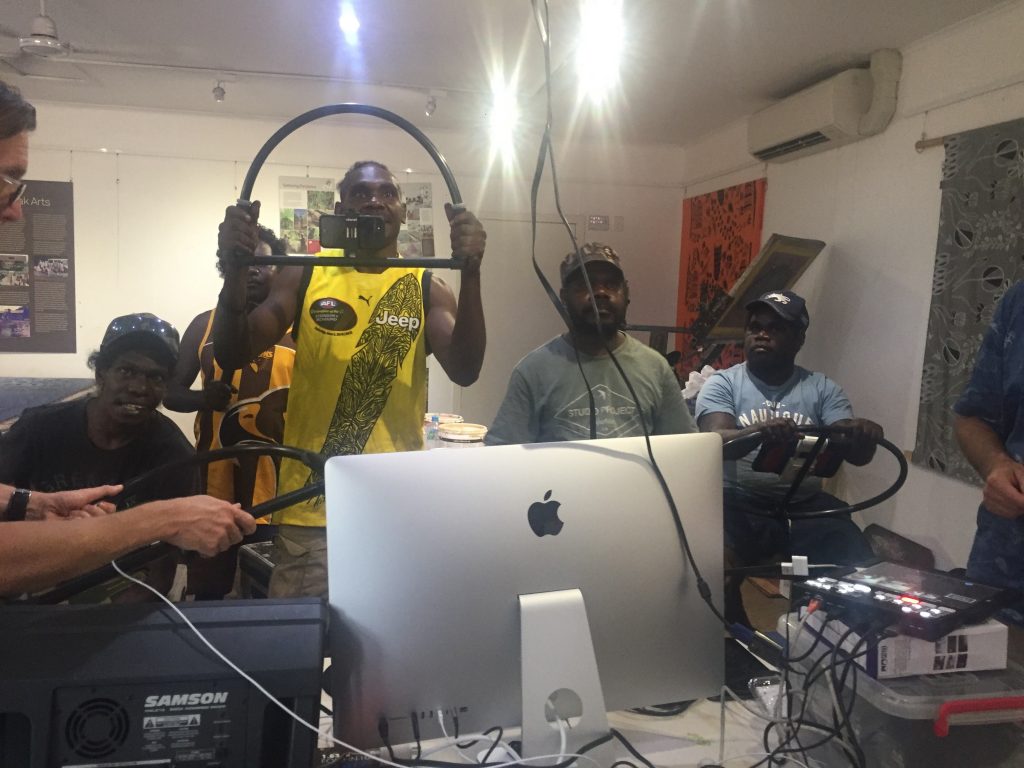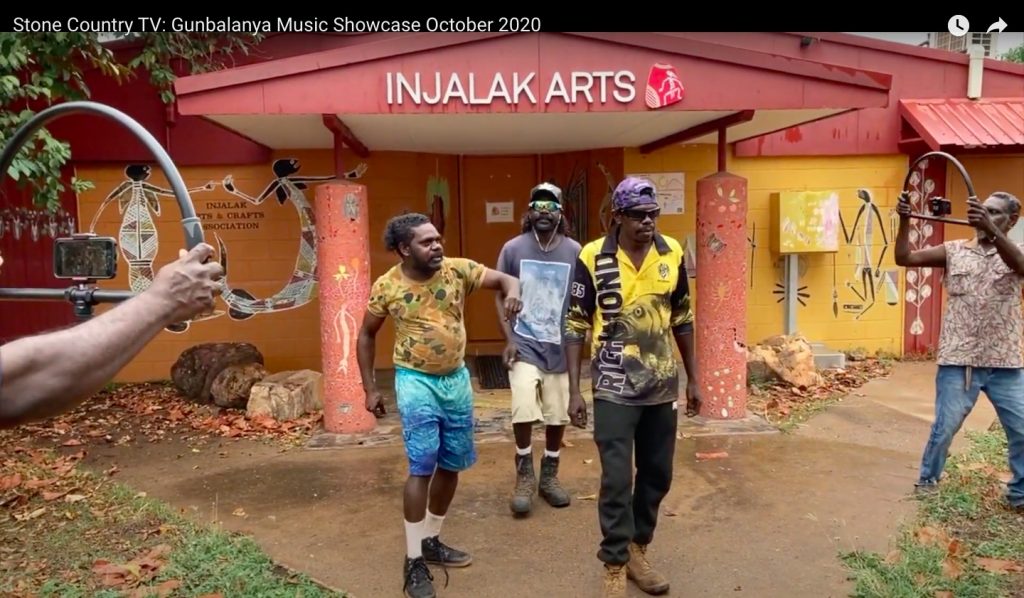Annual Review stories Community stories: 26 October 2021
The traditional owners of Gunbalanya is the Gumurdul family who allow Injalak to operate on their land and are actively supportive of the art centre.
About 500 km from Darwin, you can find the region of Arnhem Land, in the Northern Territory. For six months of the year, you can cross the East Alligator River to Gunbalanya. For the remainder of the year, the river is too high, cutting Gunbalanya and the 1,200 people that live there, off from the rest of the country.
Like many First Nations communities, Gunbalanya is rich with culture and heritage, with a strong desire to pass on this traditional knowledge, particularly among young people. Indigenous community art centres play an important role in the artistic and cultural life of traditional Aboriginal artists living in remote communities.
Gunbalunya’s Injalak Arts centre in West Arnhem Land supports over 350 Indigenous Kunwinjku artists. They provide professional development programmes, workshops, mentoring support and On Country trips to collect art materials. Pre-COVID times, thousands of tourists would visit Injalak Arts every year to witness the art, music, natural environment, and many other culturally significant activities.
In the midst of COVID restrictions, with no visitors to the region allowed, Injalak Arts ran a two-week music workshop and a week-long live video production workshop that involved local musicians recording and rehearsing songs, as well as coaching and mentoring for eight members of the newly formed Media Unit who learnt all about live production. Thanks to a $10,000 Strengthening Rural Communities grant, funded by the Tim Fairfax Family Foundation, Injalak Arts was able to pay artist and consultation fees with Indigenous Australians who led the workshops.
The COVID-19 restrictions, and subsequent absence of any visitors to witness the performance, weren’t an issue for the production team, as the Media Unit used iPhones and iPads to stream the performance. People across the country were able to tune in, with some even watching from the UK.
The project brought the community together and provided an opportunity to demonstrate their creative expertise and talents, as well as developing new skills in live television production.
Injalak Arts’ Culture and Media Officer Alex Ressel explained the grant has had ongoing benefits for the community.
“We have since utilised this experience and equipment on other video projects in western Arnhem Land, so it is not necessary to employ external camera operators to document and live stream cultural events in western Arnhem Land.
“When bininj (Indigenous) people are behind the camera as well as in front of it, a radically different form of moving image work is created, enabling a culture to define its own mode of representation, ask the right questions.
“It means we can employ local Indigenous people and keep money circulating within community, as well as making the representation of Kunwinjku culture to wide and diverse audiences.”




